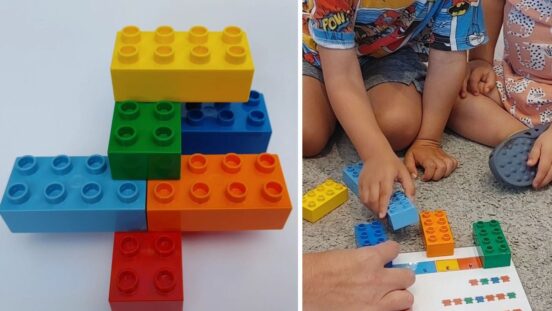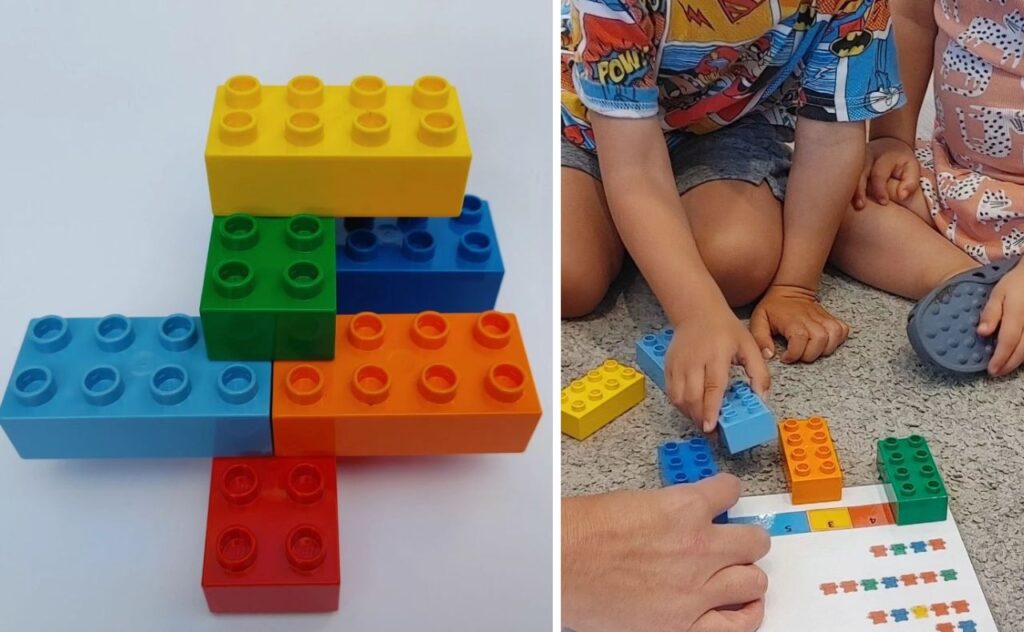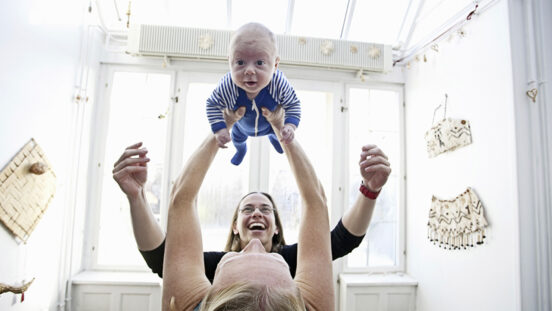How the Six Brick Method boosts speech, language, and math skills

Building blocks to success.
Imagine a school day where children enjoy problem-solving, tackle tasks with confidence and persist in the face of difficulties.
Wouldn’t it be incredible if children could keep focused and resist distraction, plan their own tasks and use previously taught strategies. That’s what Six Bricks aims to achieve.
What is the Six Bricks Method?
Six Bricks is a set of hundreds of activities based on using just 6 DUPLO size bricks with 2×4 studs in red, yellow, orange, green, light and dark blue. All of the 2-5 minute activities encourage the development of core skills through playful learning.
The purpose of Six Bricks is to use these manipulatives to develop executive functioning skills as part of learning through play. The activities are also designed to help children with developmental areas such as fine and gross motor movement, spatial skills, reasoning and logic as well as collaboration and story-telling.
How are teachers using Six Bricks?
Here are some of the ways in which teachers are using Six Bricks in classrooms and early learning centres:
- At the start of the day or after a break to gain focus and attention.
- As ‘brain-gym’ in any of the learning areas of the curriculum to develop working memory, inhibitory control and cognitive flexibility.
- As a way of reinforcing and consolidating learning concepts in language, numeracy or in fact, any part of the curriculum.
- At any time of the day when the energy lags so that the group is re-energised whist still learning in a playful way.

How can Six Bricks be used at home?
At home, parents use Six Bricks to assist children with skills development or build on concepts that they worked through at school. Children’s eyes light up when they see the bricks so the barriers are lowered to help boost their social, emotional, physical and academic growth.
Try out these ideas for using Six Bricks at home:
- Have the bricks available in visible places such as on kitchen counters so that they are ready for quick, daily activities.
- Can your child form a tower using the bricks from short end to short end? How high can they go? Can they place the bricks on top of each other using a clothes peg or with only one hand? This builds fine motor movement, concentration and perseverance.
- Could they try taking the red brick and matching the other objects in the house that are also red? Then move onto another colour. This activity helps to develop observational skills and gross motor movement.
- Can you form a pattern from the bricks and ask your child to copy it and then extend it. This is a way of developing their peripheral vision and their ability to sequence as part of higher order thinking skills and numeracy.
Dr Denise Meyerson who introduced Six Bricks into Australian schools and homes says Six Bricks is perfect for a range of age groups.
“I don’t know of any other tool that is so versatile in developing so many skills, that appeals to several age groups – and that doesn’t break the budget! It works well for individual work as well as in pairs, small and large groups to encourage out of the box thinking, the application of numeracy skills, the ability to cross the midline and develop peripheral vision for reading fluency,” she says.
“Our aim is to see Six Bricks on every school desk as a scalable solution to playfully engage children in a variety of skills development activities.”
To learn more visit: www.yay4play.com




